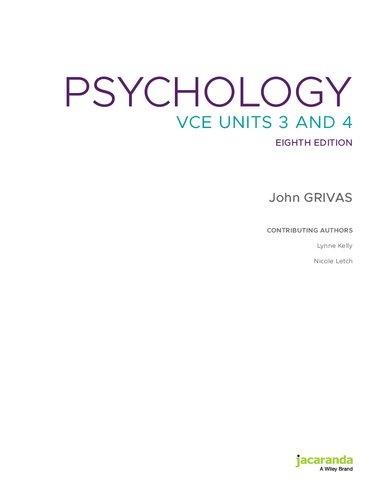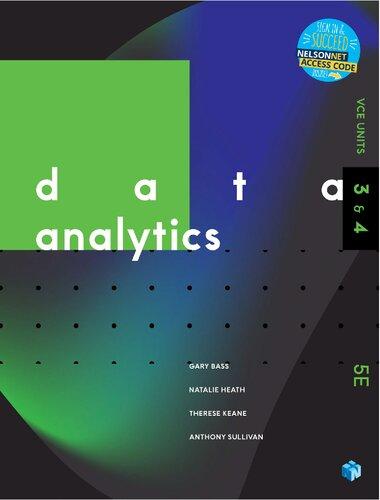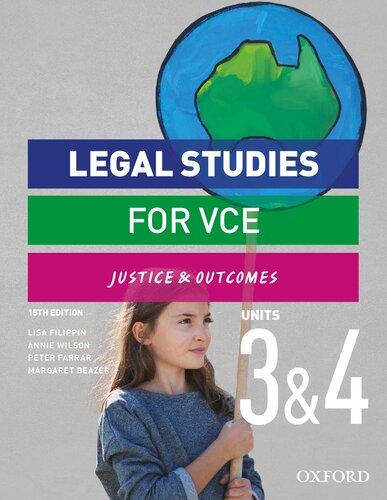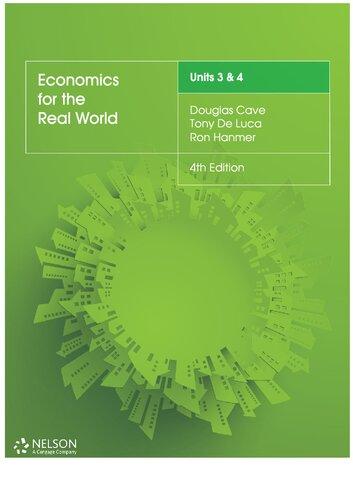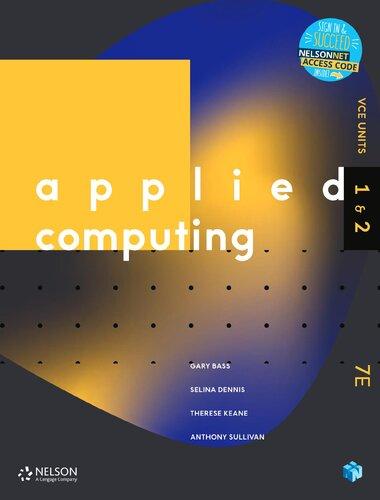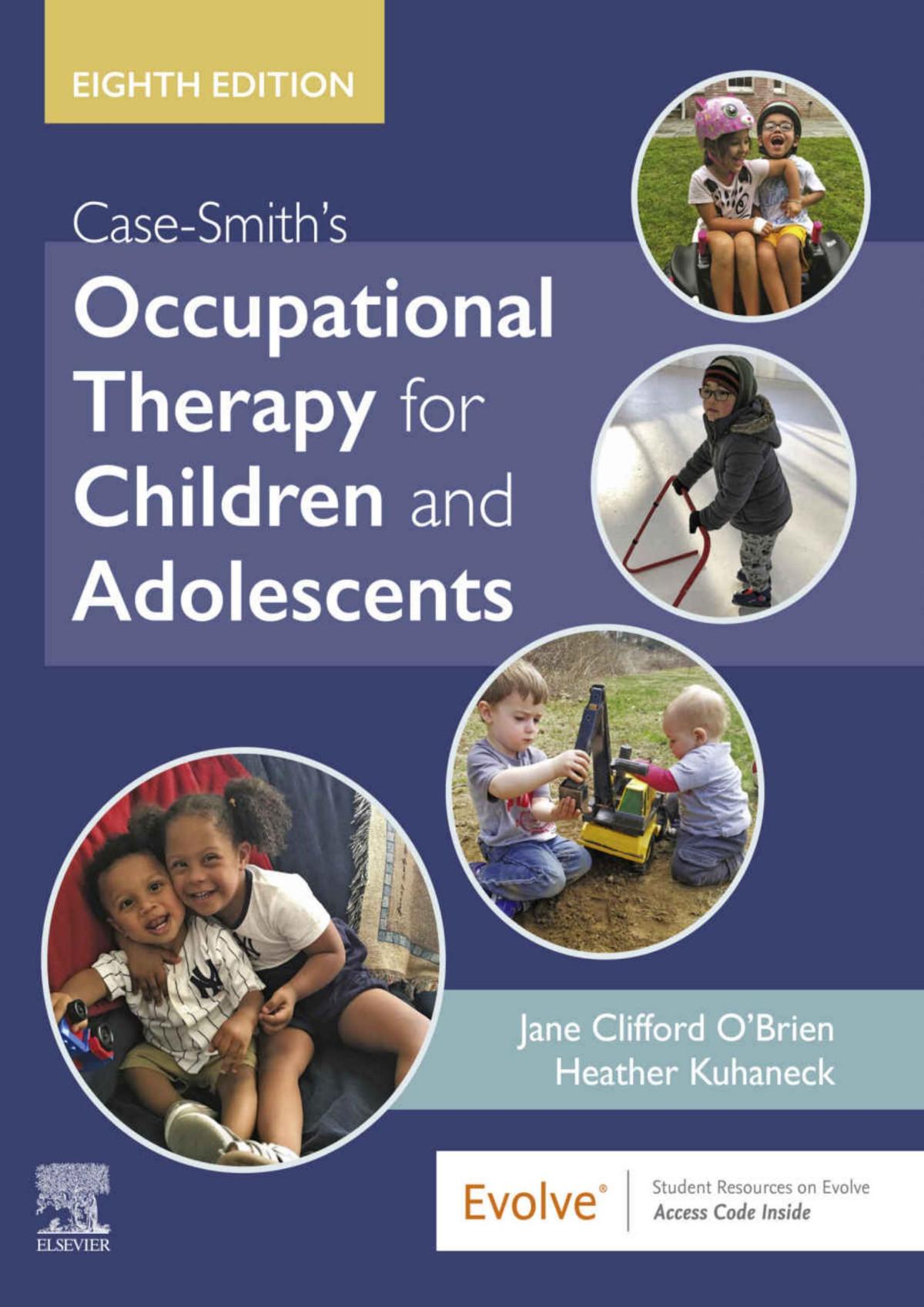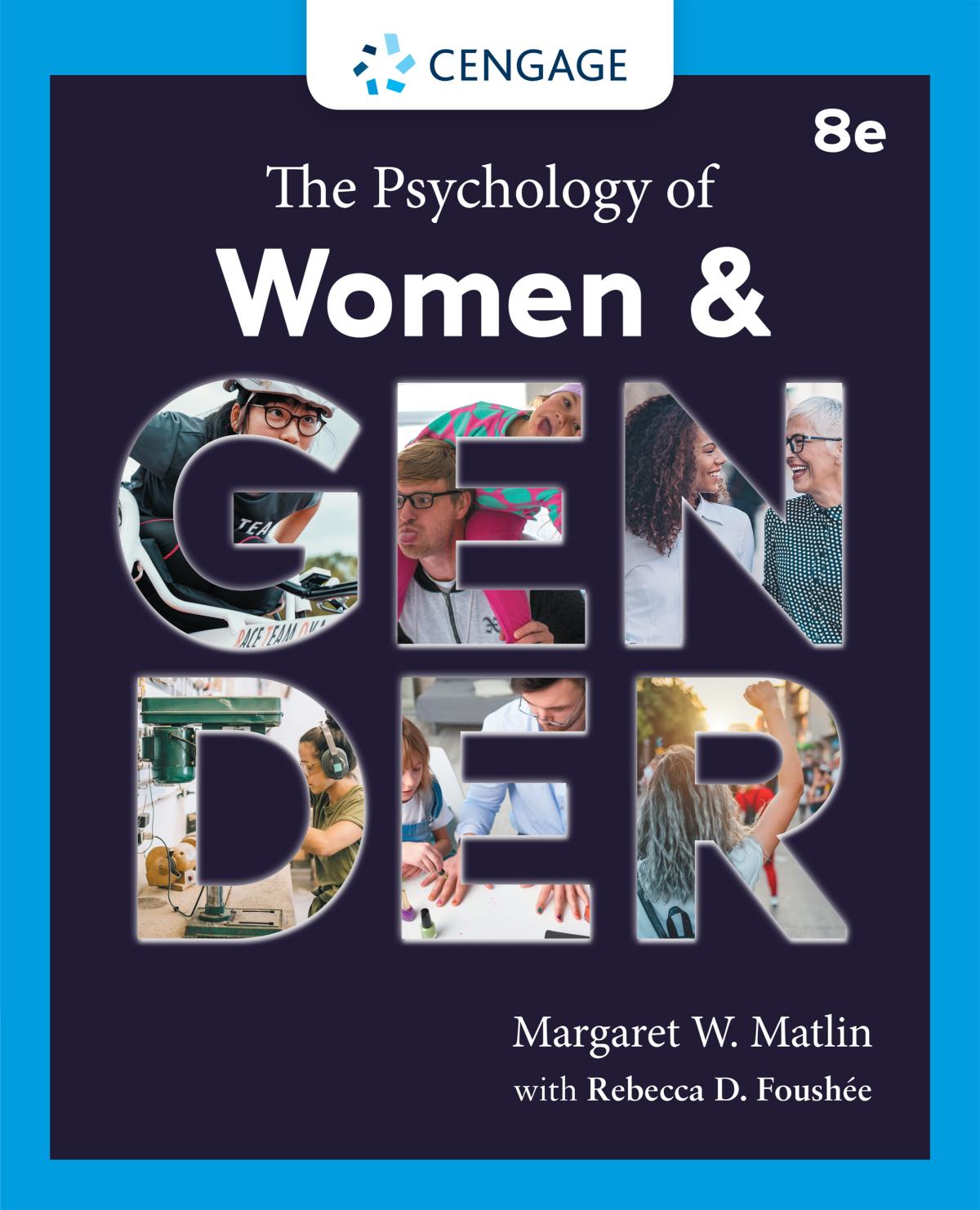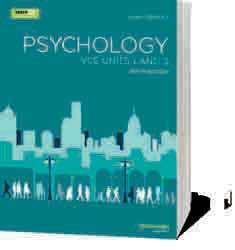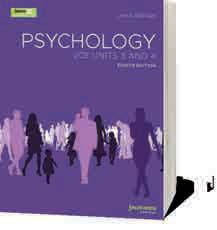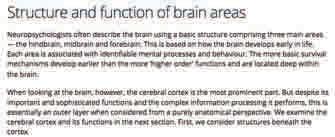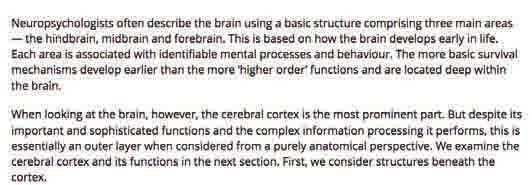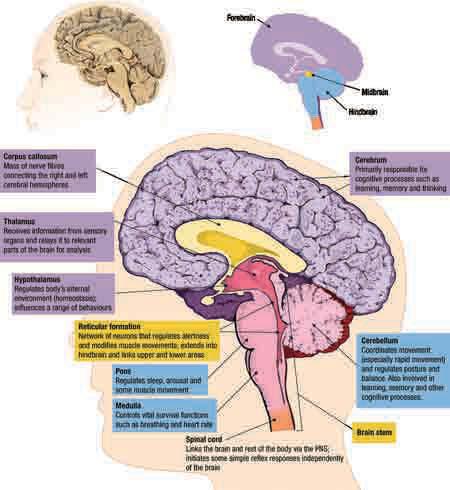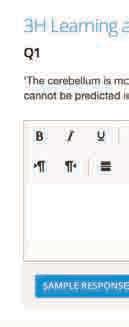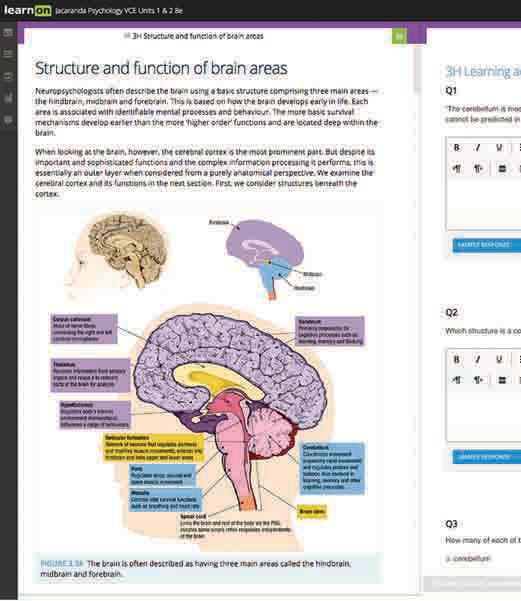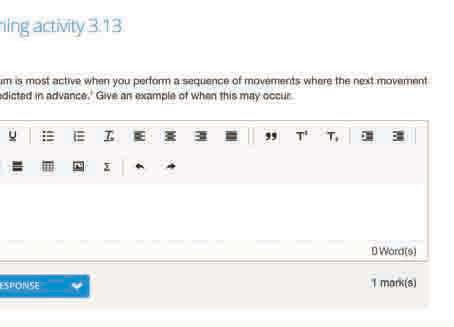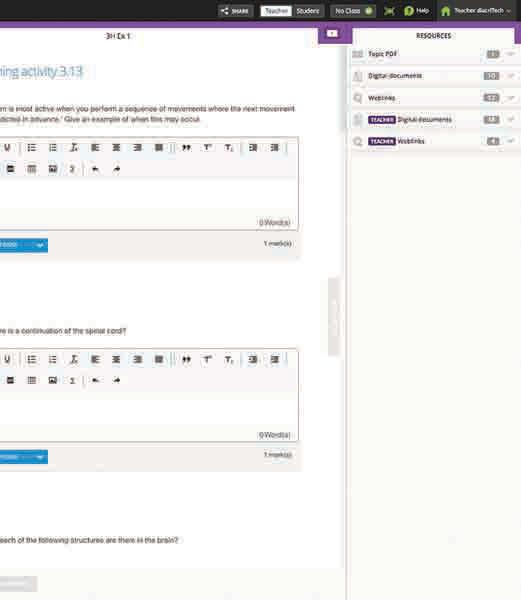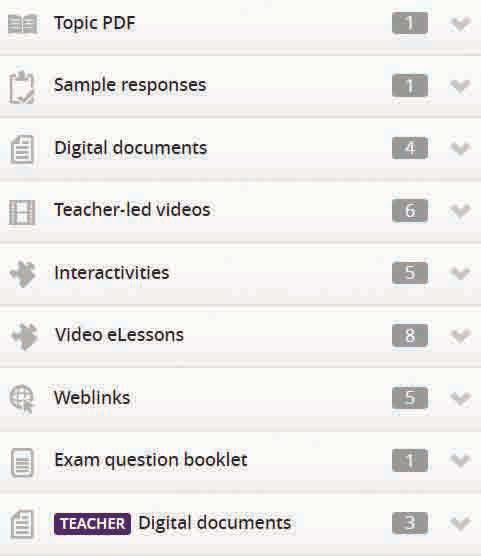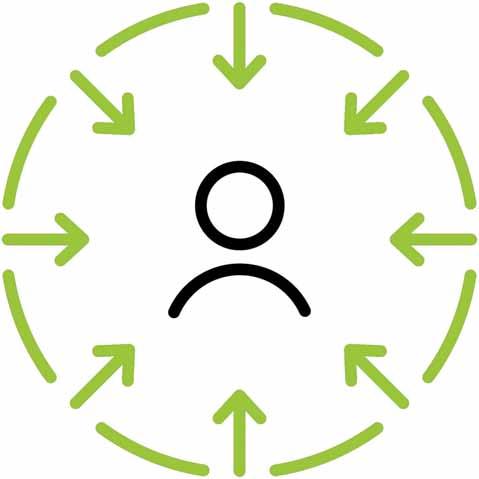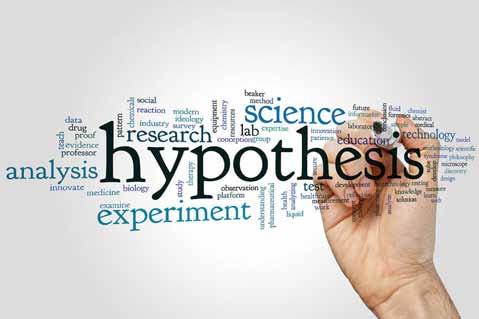PSYCHOLOGY VCE UNITS 3 AND 4
EIGHTH EDITION
John GRIVAS
CONTRIBUTING
AUTHORS
Lynne Kelly
Nicole Letch
Eighth edition published 2023 by John Wiley & Sons Australia, Ltd
155 Cremorne Street, Cremorne, Vic 3121
First edition published 1996
Second edition published 1999
Third edition published 2004
Fourth edition published 2010
Fifth edition published 2013
Sixth edition published 2017
Seventh edition published 2019
Typeset in 10.5/13 pt TimesLTStd
© Bremar Holdings Pty Ltd, 2023
The moral rights of the authors have been asserted.
ISBN: 978-1-119-88810-9
Reproduction and communication for educational purposes
The Australian Copyright Act 1968 (the Act) allows a maximum of one chapter or 10% of the pages of this work, whichever is the greater, to be reproduced and/or communicated by any educational institution for its educational purposes provided that the educational institution (or the body that administers it) has given a remuneration notice to Copyright Agency Limited (CAL).
Reproduction and communication for other purposes
Except as permitted under the Act (for example, a fair dealing for the purposes of study, research, criticism or review), no part of this book may be reproduced, stored in a retrieval system, communicated or transmitted in any form or by any means without prior written permission. All inquiries should be made to the publisher.
Trademarks
Jacaranda, the JacPLUS logo, the learnON, assessON and studyON logos, Wiley and the Wiley logo, and any related trade dress are trademarks or registered trademarks of John Wiley & Sons Inc. and/or its affiliates in the United States, Australia and in other countries, and may not be used without written permission. All other trademarks are the property of their respective owners.
Front cover images: © Boguslaw Mazur / Shutterstock
Illustrated by diacriTech and Wiley Composition Services
Typeset in India by diacriTech
This suite of print and digital resources may contain images of, or references to, members of Aboriginal and Torres Strait Islander communities who are, or may be, deceased. These images and references have been included to help Australian students from all cultural backgrounds develop a better understanding of Aboriginal and Torres Strait Islander peoples’ history, culture and lived experience. Wherever possible, culturally sensitive material has been flagged with a disclaimer at the beginning of a subtopic to help teachers and students navigate the material.
2.6 Neural mechanisms of memory formation and learning 201
2 6 1 Synaptic plasticity and changes to connections between neurons ������������ 201
2�6�2 Sprouting, rerouting and pruning ��������� 203
2�6�3 Long-term potentiation and long-term depression 204
2.7 Review 209
3 Stress as an example of a psychobiological process
217
3.1 Overview 218
3.2 Internal and exter nal stressors 220
3.3 Acute and chronic stress 221
3.4 Fight-or-flight-or-freeze response in acute stress 223
3 4 1 Fight or flight reactions 224
3 4 2 Freeze reaction 226
3.5 Role of cortisol in chronic stress 230
3.6 The gut–brain axis (GBA) 234
3 6 1 Gut–brain axis 234
3 6 2 Gut microbiota 234
3 6 3 Links with stress 235
3.7 Selye’s General Adaptation Syndrome (GAS) as a biological model of stress 238
3 7 1 Stages of the GAS 239
3 7 2 Strengths and limitations of the GAS 240
3.8 Stress as a psychological process 245
3 8 1 Lazarus and Folkman’s Transactional Model of Stress and Coping 245
3 8 2 Strengths and limitations of the Lazarus and Folkman model 248
3.9 Strategies for coping with stress 252
3 9 1 Context-specific effectiveness 253
3 9 2 Coping flexibility 253
3 9 3 Approach and avoidance coping strategies
3�9�4 Comparing effectiveness of approach and avoidance strategies 256
3.10 Review 261
4 Approaches to understand learning 269
4.1 Overview 270
4.2 Behaviourist
6
6.4 Regulation of sleep–wake patterns by inter nal biological mechanisms 400
6 4 1 Circadian rhythms 401
6 4 2 Ultradian rhythms 402
6 4 3 Suprachiasmatic nucleus 403
6 4 4 Melatonin 404
6.5 NREM and REM sleep 407
6 5 1 NREM sleep 408
6 5 2 REM sleep 410
6.6 Differences in, and explanations for, the demands for sleep across the life span 415
6 6 1 Newborns and infants 416
6 6 2 Children 417
6 6 3 Adolescents 417
6 6 4 Adults 417
6.7 Review 422
7 Importance of sleep in mental wellbeing
429
7.1 Overview 430
7.2 Effects of partial sleep deprivation 432
7 2 1 Affective functioning 434
7 2 2 Behavioural functioning 436
7 2 3 Cognitive functioning 438
7.3 Comparing effects of one night of full sleep deprivation vs blood-alcohol concentrations of 0.05 and 0.10 442
7 3 1 Cognitive effects 442
7 3 2 Affective effects 443
7.4 Circadian rhythm sleep disorders 446
7 4 1 Delayed Sleep Phase Syndrome (DSPS) 447
7 4 2 Advanced Sleep Phase Disorder (ASPD) 447
7�4�3 Shift work disorder ������������������������������ 451
7�4�4 Treatment of circadian rhythm sleep disorders through bright light therapy 455
7.5 Improving sleep hygiene and adaption to zeitgebers to improve sleep–wake patterns and mental wellbeing 460
7 5 1 Improving sleep hygiene 460
7 5 2 Adaptation to zeitgebers 461
7.6 Review 468
8 Defining mental wellbeing 475
8.1 Overview 476
8.2 Ways of considering mental wellbeing 478
The Social and Emotional Wellbeing (SEWB) view of mental wellbeing for Aboriginal and Torres Strait Islander peoples 482
8.3 Mental wellbeing as a continuum 486
9 Biopsychosocial approach to explain specific phobia
8.4 Mental wellbeing as a product of inter nal and external factors 489 8.5 Variations for individuals experiencing stress, anxiety and phobia
1.1 O verview
KEY SCIENCE SKILLS
• Develop aims and questions, formulate hypotheses and make predictions
• Plan and conduct investigations
• Comply with safety and ethical guidelines
• Generate, collate and record data
• Analyse and evaluate data and investigation methods
• Construct evidence-based arguments and draw conclusions
• Analyse, evaluate and communicate scientific ideas
Source: ©VCAA, VCE Psychology Study Design: 2023–2027. pp.12–13.
Psychology is a scientific discipline that seeks to describe, explain, understand and predict human behaviour and mental processes. There are many different approaches to the study of psychology. VCE Psychology applies a biopsychosocial approach to the study of behaviour and mental processes.
The VCE Psychology Study Design also prescribes a set of key science skills that is a core part of the study and applies across all areas of study in all
units. In this topic we examine the key science skills and research methodology prescribed for VCE Psychology.
Table 1.1 shows the key science skills specified for study in VCE Psychology. You will be given the opportunity to develop then demonstrate these skills at a progressively higher level throughout Units 3 and 4.
Key science skill VCE Psychology Units 1–4
Develop aims and questions, formulate hypotheses and make predictions
Plan and conduct investigations
Comply with safety and ethical guidelines
• identify, research and construct aims and questions for investigation
• identify independent, dependent and controlled variables in controlled experiments
• formulate hypotheses to focus investigations
• predict possible outcomes of investigations
• determine appropriate investigation methodology: case study; classification and identification; controlled experiment (within subjects, between subjects, mixed design); correlational study; fieldwork; literature review; modelling; product, process or system development; simulation
• design and conduct investigations; select and use methods appropriate to the investigation, including consideration of sampling technique (random and stratified) and size to achieve representativeness, and consideration of equipment and procedures, taking into account potential sources of error and uncertainty; determine the type and amount of qualitative and/or quantitative data to be generated or collated
• work independently and collaboratively as appropriate and within identified research constraints, adapting or extending processes as required and recording such modifications
• demonstrate ethical conduct and apply ethical guidelines when undertaking and reporting investigations
• demonstrate safe laboratory practices when planning and conducting investigations by using risk assessments that are informed by safety data sheets (SDS), and accounting for risks
• apply relevant occupational health and safety guidelines while undertaking practical investigations
Table 1.1
VCE Psychology Units 1–4 key science skills
Key science skill
Generate, collate and record data
VCE Psychology Units 1–4
• systematically generate and record primary data, and collate secondary data, appropriate to the investigation
• record and summarise both qualitative and quantitative data, including use of a logbook as an authentication of generated or collated data
• organise and present data in useful and meaningful ways, including tables, bar charts and line graphs
Analyse and evaluate data and investigation methods
• process quantitative data using appropriate mathematical relationships and units, including calculations of percentages, percentage change and measures of central tendencies (mean, median, mode), and demonstrate an understanding of standard deviation as a measure of variability
• identify and analyse experimental data qualitatively, applying where appropriate concepts of: accuracy, precision, repeatability, reproducibility and validity; errors; and certainty in data, including effects of sample size on the quality of data obtained
• identify outliers and contradictory or incomplete data
• repeat experiments to ensure findings are robust
• evaluate investigation methods and possible sources of error or uncertainty, and suggest improvements to increase validity and to reduce uncertainty
Construct evidence-based arguments and draw conclusions
Analyse, evaluate and communicate scientific ideas
• distinguish between opinion, anecdote and evidence, and scientific and non-scientific ideas
• evaluate data to determine the degree to which the evidence supports the aim of the investigation, and make recommendations, as appropriate, for modifying or extending the investigation
• evaluate data to determine the degree to which the evidence supports or refutes the initial prediction or hypothesis
• use reasoning to construct scientific arguments, and to draw and justify conclusions consistent with evidence base and relevant to the question under investigation
• identify, describe and explain the limitations of conclusions, including identification of further evidence required
• discuss the implications of research findings and proposals, including appropriateness and application of data to different cultural groups and cultural biases in data and conclusions
• use appropriate psychological terminology, representations and conventions, including standard abbreviations, graphing conventions and units of measurement
• discuss relevant psychological information, ideas, concepts, theories and models and the connections between them
• analyse and explain how models and theories are used to organise and understand observed phenomena and concepts related to psychology, identifying limitations of selected models/theories
• critically evaluate and interpret a range of scientific and media texts (including jour nal articles, mass media communications, opinions, policy documents and reports in the public domain), processes, claims and conclusions related to psychology by considering the quality of available evidence
• analyse and evaluate psychological issues using relevant ethical concepts and guidelines, including the influence of social, economic, legal and political factors relevant to the selected issue
• use clear, coherent and concise expression to communicate to specific audiences and for specific purposes in appropriate scientific genres, including scientific reports and posters
• acknowledge sources of information and assistance, and use standard scientific referencing conventions
Source: VCE Psychology Study Design: 2023–2027. pp.12–13.
All key science skills are evident in the research methods commonly used for psychological investigations. A research method is a particular way of conducting an investigation to collect accurate and reliable data on a specific question or problem of interest. For example, experiments, correlational studies and observational studies are different research methods. Collectively, research methods provide the means or ‘tools’ for observing, measuring, manipulating or controlling what takes place in a psychological investigation.
Each type of research method has its advantages and limitations. Some are more suited to particular research hypotheses and data collection than others. The choice of research method depends on which is most appropriate for the hypothesis being tested and the type of data to be collected.
1.1 LEARNING ACTIVITY
Multiple-choice questions
1. Behaviour is best described as
A. directly observable activity
B. psychological activity.
C. a psychological process.
D. a mental process.
Most of what psychologists know about behaviour and mental processes is based on empirical evidence. Empirical evidence is data collected through systematic observations and/or carefully controlled experiments. This type of evidence allows psychologists to draw accurate conclusions which are more likely to be valid and free from personal biases, as compared to our ‘common sense’ conclusions based on everyday observations of behaviour.
learnMORE | Outline of VCE Psychology
Access learnON for a summary of the course and its assessment requirements.
2. Which of the following is best classified as a mental process?
A. crying
B. thinking
C. breathing
D. talking
3. Which of the following statements about human behaviour, cognition and emotion is correct?
A. Behaviour can influence cognition but not emotion.
B. Emotion may influence behaviour but not cognition.
C. Cognition may influence behaviour but not emotion.
D. Behaviour, cognition and emotion may influence each other
4. A research method Is best described as a/an
A. experiment.
B. key science skill.
C. scientific discipline.
D. process for planning and conducting an investigation.
5. Empirical evidence is best described as
A. a carefully controlled experiment.
B. a combination of scientific discipline and common sense.
C. data collected through scientific research.
D. research evidence describing behaviour and mental processes.
To answer questions online and receive immediate feedback, access learnON at www.jacplus.com.au.
1.2 Aims, hypotheses and variables
There is a virtually endless list of topics of research interest in psychology and many approaches to investigating those topics. An initial step is for the researcher to develop an idea about what to investigate then determine what aspect of the topic they wish to focus on. The specific topic of research interest is often called the research ‘question’ or ‘problem’.
When the topic has been identified and refined, the next step is to construct a research hypothesis that can be tested, taking account of the variables of specific relevance to the investigation.
1.2.1 Aims
It is important that the researcher is clear in their own mind as to what their research question will be. This helps focus their research activities. If they begin with a broad area of interest, they will need to narrow this down to a specific area.
Having chosen their topic area, they will need to determine exactly what their aim is in the research. This involves deciding what the investigation is actually trying to achieve.
The aim is a statement outlining the purpose of the investigation. It can range in length from a single sentence to a short paragraph and should be expressed as clearly and precisely as possible. Some examples of appropriate research aims are:
• The aim of this investigation is to compare differences in the amount of sleep obtained by adolescents and very old people.
• The aim of this experiment is to assess the effects of practice on learning.
• To examine the effects of different types of feedback on performance of a novel task.
• To investigate the effectiveness of acronyms in aiding recall.
• To identify sex differences in the use of approach and avoidance strategies for coping with stress.
It is often possible to re-state the research question as the aim. For example, a researcher might be interested in ways of reducing the number of
accidents caused by red P-plate drivers. After reading relevant information on the topic, such as reports on other investigations that may have been conducted on P-plater accidents, the researcher may construct the following research question: ‘Does defensive driving training help to reduce the number of accidents caused by red P-plate drivers?’ This may be converted into an aim statement such as: The aim of this investigation is to examine whether defensive driving training helps reduce the number of accidents red P-plate drivers cause.
When writing the aim for one of your investigations, consider the following points:
• Ensure the aim describes the purpose of your investigation — what you are actually trying to find out from conducting the investigation.
• Make the aim as clear and uncomplicated as possible.
• Try and limit the aim to a single sentence to help focus your thinking.
• It may help to try expressing the aim as a research question to start with.
• If you have both a research question and an aim, ensure your aim clearly and closely relates to the research question.
• If you have more than one aim, ensure the aims are related.
Figure 1.1 The aim defines the purpose of an investigation and helps focus research activities.
1.2.2 Hypotheses
In psychology as in other sciences, different research methods are used to test one or more hypotheses relevant to the question or problem a researcher aims to investigate. The hypothesis formulated for an investigation is commonly called the research hypothesis.
A research hypothesis is a testable prediction of the relationship between two or more variables (events or characteristics). For example, it may be a prediction about the relationship between:
• mobile phone conversation while driving (one event) and driving performance (another event)
• biological sex (one characteristic) and oral language skills (another characteristic)
• exposure to a stressor (one event) and heart rate (one characteristic).
The hypothesis formulated for an investigation essentially describes the researcher’s expectation about what the results will be. It is usually based on knowledge of other research findings or theories or models on the question of interest. This is why it is sometimes referred to as an ‘educated’ prediction or even an educated ‘guess’.
The hypothesis is formulated before the investigation is conducted and provides a very specific focus for the investigation and its report. A useful research hypothesis typically has the following characteristics:
• refers to events or characteristics that can be observed and measured and is therefore testable (e.g. talking on a mobile phone while driving and driving performance are both measurable in a driving simulator and therefore data can be collected for hypothesis testing; whereas a hypothesis that people see a bright light when they die is not testable because it is not possible to observe or measure human experiences after death)
• can be supported or ‘refuted’ (denied or shown to be incorrect) by the data collected for the investigation
• states the existence of a relationship between two or more variables (e.g. a relationship between mobile phone conversation and driving performance)
• states the expected relationship between the variables, sometimes referred to as the ‘direction of the relationship’ (e.g. how talking on a
mobile phone will influence or change driving performance)
• states a possible explanation of the results (e.g. impaired driving performance will be attributable to mobile phone conversation while driving)
• based on observations, a theory, model or research findings
• prepared as a carefully worded written statement (rather than a question)
• expressed clearly and precisely (rather than vaguely and generally)
• written as a single sentence.
In some cases, the research hypothesis may also refer to the larger group (or ‘population’) from which the sample was drawn and therefore about which the researcher intends to draw conclusions and apply the results. The population, however, is most commonly described in the introduction to the report on the investigation.
Research hypotheses for the examples given earlier could be:
• Mobile phone conversation while driving, whether hands-on or hands-off, impairs driving performance.
• Females have better oral language skills than males.
• Heart rate will increase when a person is exposed to a stressor.
There is no preferred writing style for a research hypothesis (nor is there a mandated style for VCE Psychology).
Figure 1.2 A research hypothesis is a testable prediction of the relationship between two or more variables.
Different writing styles can be equally valid. For example, some hypotheses use an ‘if-then’ style, such as ‘if a certain event occurs, then it will cause a certain response’. In relation to the mobile phone conversation and driving performance ‘events’ (or variables), an if-then hypothesis may be stated as: `If a person engages in a mobile phone conversation when driving, then they will make more driving errors.’ A more generally stated prediction such as `Mobile phone conversation while driving impairs driving performance’ would also be an appropriate alternative.
Whatever your preferred style, to help ensure the hypothesis is expressed as a statement rather than a question, you can start your hypothesis with a phrase such as ‘It was hypothesised that …’ when preparing your report (noting that research reports are written in the past tense).
It is not always possible to be entirely certain about the accuracy of a prediction within a hypothesis, especially when the question or problem of research interest has not been widely studied, if at all. This is mainly because the researcher does not necessarily know or can control the influence of the many different variables that can affect the behaviour or mental process being studied. Nonetheless, many researchers would consider it pointless to conduct an investigation when the outcome is certain.
Scientific predictions tend to be more accurate about a large group or people in general than about a specific person. For example, a car insurance company can more accurately predict the percentage of people in a particular age group who are likely to be involved in road accidents this year than it can predict whether any particular individual in that age group will have an accident. Similarly, a psychologist may be able to correctly predict that cigarette smokers will be more likely to suffer a heart attack, but they cannot predict with certainty whether a particular cigarette smoker will suffer a heart attack.
This situation is no different in other sciences, which can only make predictions with varying degrees of probability of being correct. For example, your doctor may prescribe an antibiotic that, based on medical research, is usually effective in treating pneumonia. Your doctor, however, cannot guarantee that it will cure your pneumonia. Similarly, seismologists know that cities lying along geological faults are more likely to experience earthquakes, but they cannot
Figure 1.3 Scientific predictions tend to be more accurate about a large group or people in general than about a specific person. For example, a psychologist may be able to correctly predict that cigarette smokers will be more likely to suffer a heart attack, but they cannot predict with certainty whether a particular cigarette smoker will suffer a heart attack.
accurately predict the day, or even the year, when one of these cities will experience its next major earthquake (Sdorow, 1995).
Hypothesis versus theory and model
In VCE Psychology you need to be able to develop aims and hypotheses and link these to theories and models.
A research hypothesis is different from a theory and model. A research hypothesis is a specific prediction that guides the collection, analysis, interpretation and evaluation of data that has been collected to test it. In contrast, theories and models are generally broader and far more detailed, with a focus on describing and/or explaining.
A theory is a body of interrelated concepts (‘ideas’) that attempt to explain interrelated observations and make predictions about future events. Some wellknown theories in psychology are Freud’s theory of personality development, and Piaget’s theory of cognitive development. Freud’s theory explains personality development in terms of abstract concepts such as the id, ego and superego and describes five psychosexual stages through which we progress from birth to early adulthood.
There are also theories on more specific aspects of behaviour and mental processes such as the restoration and evolutionary theories on why we sleep, psychoanalytic and biological theories on why we dream, and numerous other theories about, why we may develop a specific mental health disorder, how we learn, how we process information when remembering, why memories of emotionally significant events tend to be long-lasting, why we forget, when we are more likely to change an unhealthy behaviour, and so on.
The term model is often used interchangeably with theory, however, a model in psychology focuses more on representing how some behaviour and/or a mental process(es) could, should or does occur. It may be a simple graphic or other type of representation of a single concept or a basic observation, such as a cause–effect relationship between two events, how a brain structure may respond to fear or how a new procedure for diagnosing a specific mental health disorder is performed. In particular, a model can be useful in understanding abstract or ‘hard to visualise’ concepts about behaviour and mental processes.
More complex models are often supported with or presented in the form of a diagram with boxes and arrows to organise and show relationships between different concepts. Figure 1.4 shows an example of a model used to represent the process of how a theory or model may be developed or change. Models specified for study in VCE Psychology Units 3 and 4 include:
• Hans Selye’s General Adaptation Syndrome as a biological model of stress
• Lazarus and Folkman’s Transactional Model of Stress and Coping which explains stress as a psychological process
• the Atkinson-Shiffrin multi-store model of memory
• the biopsychosocial approach as a model for considering mental wellbeing.
Theories and models vary in scope, complexity and detail. All have one or more limitations. Some are essentially a hypothesis that has been restated. Others explain many interrelated research findings and ideas. Along with explaining existing results, a useful theory or model generates new hypotheses and guides further research.
Many theories or models of child development, mental health, personality, learning, remembering, forgetting and so on, are the products of psychological research and have generated valuable new research. In addition, some theories have generated new models and some models have generated new theories.
Whatever their scope — from tiny to vast — theories and models serve a gap-filling function. They explain how findings and ideas fit together in an organised way and what they mean, thereby making psychology a discipline that does more than report isolated facts. Some can be used to predict behaviour or a mental process in real life settings, thereby helping achieve an important goal of psychology.
Psychologists prefer testable theories and models because they can be confirmed, revised or refuted by further scientific research. Therefore, theories and models tend to not be judged in terms of their accuracy but rather in terms of their usefulness. This means that a theory or model tends to not be considered as right or wrong. Instead, it is simply regarded as more or less useful.
Both theories and models can be refined or changed as further research is conducted. Those that are less useful are often overlooked or discarded.
Conduct the investigation Create or revise the theory or model
Observation/ research findings
Theory/model Use the theory or model to formulate a research hypothesis
Design an investigation to test the hypothesis Research Research hypothesis
Figure 1.4 Theories and models are revised and expanded to reflect relevant research findings. New or revised theories and models lead to new observations or questions that stimulate new research and hypothesis testing.
1.2 LEARNING ACTIVITY 1
Review
1. Explain the difference between each of the following:
a. the aim and hypothesis for a psychological investigation
b. a psychological theory and model
c. a research hypothesis and a theory or model.
2. Construct a two-column table. In one column, list the characteristics of a useful research hypothesis. In the other column, summarise each characteristic using not more than three words.
3. Explain two possible limitations of the following research question if it were to be used as a hypothesis: Do some people have an extrasensory perceptual ability to send and receive mental messages?
4. Consider the following list of research questions. Choose four questions and formulate a hypothesis for each one. One of the hypotheses should be written using the if–then style Ensure all your hypotheses have key characteristics referred to in the text.
a. Lack of attention causes forgetting.
b. Crowding increases aggression.
c. Positive thinking leads to success in a job interview.
d. Does offering an incentive result in greater motivation to succeed?
e. What is the effect of rote learning of information on a person’s ability to recall the information when needed?
f. Does being permitted to take a bottle of water into an exam improve performance on the exam?
To answer questions online and receive immediate feedback, access learnON at www.jacplus.com.au.
1.2 LEARNING ACTIVITY 2
Multiple-choice questions
1. Which term best describes the aim of a research investigation?
A. purpose
B. prediction
C. problem
D. question
2. Which statement about the aim of a research investigation is correct?
A. The aim must be no longer than one sentence.
B. The aim must be derived from the hypothesis.
C. The aim and research question must be related.
D. A research investigation must have only one aim.
3. Source: VCAA 2021 Psychology, Section A, Q.17 (adapted); © VCAA
A research hypothesis
A. is a question the research study sets out to answer.
B. predicts how the researcher will conduct the research study.
C. is based on scientific knowledge or experience in order to understand and test ideas.
D. is a method of research based on the researcher’s prior knowledge and experience.
4. Which of the following could serve as a research hypothesis?
A. Regular exercise will improve mental wellbeing.
B. Does regular exercise improve mental wellbeing?
C. Regular exercise has improved mental wellbeing.
D. Regular exercise has not improved mental wellbeing.
5. If a research hypothesis is refuted, then it may be concluded that the hypothesis is
A. supported by the results obtained.
B. not supported by the results obtained.
C. not related to the research question that was studied.
D. not expressed clearly and precisely.
To answer these and additional questions online and receive immediate feedback, access learnON at www.jacplus.com.au.
1.2.3 Variables
A key science skill in VCE Psychology requires you ‘to identify independent, dependent and controlled variables in controlled experiments’.
A controlled experiment is an experimental investigation to test the relationship between an independent variable and a dependent variable, whilst controlling all other variables. For example, to test whether talking on a hand-held mobile phone while driving (one variable) causes or influences a change in driver reaction time (another variable), or whether access to a reward (one variable) has an effect on exam performance (another variable).
In this section, we focus on the different types of variables in a controlled experiment and explain how variables being tested or measured are ‘operationalised’ and why this needs to be done.
A variable is something that can change (‘vary’) in amount or type and is measurable. For example, sleep can change in both amount (e.g. number of hours) and type (e.g. with or without rapid eye movements) and is measurable (e.g. through recordings of bodily activities such as eye movements and brain wave patterns).
There is a virtually endless list of variables that may be studied in psychology. Examples include age, sex, intelligence, mood, problem solving, memory, state of consciousness, sociability, use of social media, diet, exercise, media violence, drug-taking, risktaking, family environment, religion, culture, work space, crowding, number of errors, and time taken to perform a task.
A variable may be a personal characteristic, either physical or psychological, an object, or an event that can have a specific influence on how an individual may think, feel or behave. Personal characteristics such as biological sex, blood type, genetic make-up and racial or ethnic background are all inborn and therefore ‘fixed’ and ordinarily unchanging within a person. However, in psychological research they are still considered variables because they can be of different types and are measurable.
For example, ‘male’ and ‘female’ are two types of biological sex and ‘O’, ‘A’, ‘B’ and ‘AB’ are four different blood types. Although a researcher cannot actually change a participant’s sex or blood type, they can ‘manipulate’ (or ‘change’) them by allocating males and females and/or people with different blood
types to different groups or conditions used in their experiment in order to make comparisons.
Similarly, age and intelligence are ‘fixed’ However, the researcher can manipulate them by comparing naturally occurring variations; for example, the performance of old and young participants, or, more or less intelligent participants (as indicated by IQ scores).
Independent variable
Every controlled experiment has at least one independent variable and one dependent variable. In a simple experiment, one of these variables is manipulated (controlled, selected or changed) by the researcher to observe its effect or influence on another variable.
The variable that is manipulated in order to measure its effect on the dependent variable is called the independent variable (IV). It is sometimes referred to as the ‘treatment’ or ‘treatment variable’ to which participants may be exposed (or not exposed).
The IV is assumed to have a direct effect on the dependent variable. Therefore, in terms of cause and effect, the IV is viewed as the cause of any change that may result in the dependent variable.
For example, in an experiment on whether watching a violent TV program increases aggressive behaviour, the IV will be exposure to a violent TV program. Its ‘manipulation’ will involve exposing or not exposing participants to violence in a TV program to observe the consequential changes in the dependent variable (aggressive behaviour).
The IV is assumed to have a direct effect on the dependent variable so it is also assumed that any measurable change in the dependent variable will be due to the effect of the IV. Therefore, in terms of cause and effect, the IV is viewed as the cause of any change that may result in the dependent variable.
As indicated in the example above, a ‘treatment’ may also be withheld; for example, to compare its effect(s) on participants who are exposed to it with those who are not. This is why an IV may also be referred to as having different values (or levels) — the value of the IV is systematically ‘manipulated’. In the simplest type of experiment, the IV has two values, such as exposure or non-exposure to violence in a TV program.
there a difference between Groups 1
Figure 1.5 The IV and DV in an experiment on whether watching a violent television program increases aggressive behaviour. The IV is assumed to have a direct effect on the DV. Selecting which participants are exposed or not exposed to an IV is one way of manipulating the IV.
More complex experiments have three or more values of the IV; for example, non-exposure to a violent TV program, exposure to one violent TV program and exposure to two violent TV programs. In this case, the IV has been manipulated ‘quantitatively’ by varying its ‘amount’ — exposure to one or two violent TV programs. Alternatively, the IV may be manipulated ‘qualitatively’ by varying its ‘type’. In this case, the values of the IV may involve exposure or non-exposure to specific types of violent TV programs; for example, to compare the influence of violence by cartoon characters with violence by people in a movie.
An even more complex experiment may compare responses of male and female participants to various types of violent and non-violent male and female characters or people in different types of TV programs (qualitative variables) following different periods of exposure, such as 15 minutes, 30 minutes, 45 minutes, 1 hour, and so on (quantitative variables).
An experiment can also have more than one IV. For example, a researcher might test a hypothesis that a child will behave aggressively after watching a violent TV program only if other children are present. In this case, both the violent TV program and the presence of other children would be IVs. A third IV could be drinking a high sugar content cordial during the program. Of course, one or more of these IVs could also have different values.
Dependent variable
The variable that the researcher uses to observe and measure the effects of the IV is called the dependent variable (DV). It is the aspect of a participant’s behaviour or experience that is assumed and expected to change as a result of the manipulation of the IV selected by the researcher.
The DV is often the responses made by participants and usually has a numerical (quantitative) value. For example, a behaviour such as aggression in young children might be observed and measured by the number of times physical contact is made with another person in a 5-minute period immediately after a child has been exposed to a violent or a non-violent TV program. Aggressive behaviour is the dependent variable, because the participants’ responses are believed to be influenced by, or ‘dependent on’, the effects of the independent variable.
The DV is sometimes referred to as the ‘measurement’ variable, because it provides a ‘measure’ of the participants’ responses to the independent variable.
In terms of a cause–effect relationship, the IV is viewed as the possible cause, and change in the DV is the possible effect. In experimental research, the research hypothesis states the causal relationship between the independent and dependent variables to be tested; that is, that the IV(s) will cause the DV(s) to change in a particular way.
Group 1
Watch a violent TV program
Group 2 Watch a non-violent TV program
(what is manipulated)
Controlled variable
In addition to the independent and dependent variables, there are other variables that the experimenter should anticipate and take account of.
A controlled variable is one that is considered to have an effect on the dependent variable in
an experiment so it needs to be held constant (‘controlled’) to remove its potential effects. For example, in an experiment on the effect of caffeine on psychology test performance, one group of VCE Psychology students could drink coffee (the IV) before a psychology test and their scores for the test (the DV) would be compared with those of a group who did not drink coffee.
Variables that would have to be kept constant include caffeine (e.g. type and amount of coffee that participants drink), the test (e.g. everyone sits the same test), the test conditions (e.g. day and time, the room, instructions to participants, noise), the ability of the students (e.g. comparable ability in both groups) and prior experience with the test content.
When planning and conducting an experiment, it is essential that the experimenter is confident that manipulation of the IV is likely to cause the predicted change in the DV, rather than some other variable that is not adequately controlled. Therefore, the experimenter must ensure that a controlled variable maintains that status so that it has no influence on the DV and thereby makes it difficult to isolate the effect of the IV.
Unlike the IV and DV, a controlled variable is not actually part of the experiment in itself. Nor is it a variable of interest in the investigation. For example, it is not relevant to the aim or hypothesis. But it is controlled because it could influence the outcome.
Figure 1.6 Distinguishing between (a) an IV and DV, and (b) a qualitative variable and quantitative variable
Figure
